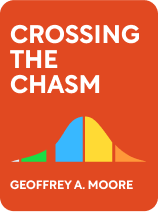

This article is an excerpt from the Shortform book guide to "Crossing the Chasm" by Geoffrey Moore. Shortform has the world's best summaries and analyses of books you should be reading.
Like this article? Sign up for a free trial here .
How do you choose an appropriate niche for your product/service? Why is it especially difficult to choose a niche for a startup?
For a startup, choosing an appropriate niche in the market is especially challenging because you can’t survey your customers or gather data on them—you don’t have any customers yet. This makes it difficult to make a decision that will determine the fate of your company because you don’t have enough data to substantiate your choice analytically.
In this article, we will discuss how you can select an appropriate startup niche.
Choosing a Niche for a Startup
Choosing an appropriate niche for a startup is especially difficult since there is no data to inform the decision. Follow these three steps to choose a niche startup:
Step 1: Generate “Customer Profiles”
A “customer profile” is simply a description of an archetypical customer. A customer profile should include characteristics like age, job title, industry, gender, race, and interests, especially as their interests relate to your product.
To develop your list of customer profiles, solicit anecdotes from people in your company who have experience interfacing with existing customers. Make sure to capture all known customers’ uses of your product, plus any other uses that seem plausible. After you generate 20 to 50 customer profiles, it will become apparent that some of them represent the same archetype, leaving you with about 10 unique characterizations.
Step 2: Build Purchasing Scenarios
Once you have your list of hypothetical customers, you can flesh them out into purchasing scenarios. Each scenario ultimately represents a market niche. Format each scenario as three sections, all of which should fit on a single page:
1. The first section is basically your customer characterization, with demographic information and so forth. Moore also notes that for some scenarios more than one person is involved in the purchase. He differentiates between the “economic buyer,” who approves funding for the purchase, the “technical buyer,” who sets up the product once it is purchased, and the end user, who uses it once it is set up. Depending on the scenario, these might all be the same person, or might be different people. If they are different people, Moore reminds you to include customer profiles for all of them.
(Shortform note: While the terms “technical buyer,” “economic buyer,” and “end user” are widely used, some sources refer to the “end user” as the “functional buyer” instead.)
2. The second section is a description of the scenario without your product. In the current market, what are your prospective customers attempting to accomplish, and how are they going about it? What problems do they have with this approach that your product could solve? What are the financial consequences of these problems?
3. The third section is a description of the scenario with your product. How can your customers use your product to achieve their goal? What features of your product enable them to succeed? What financial benefits will they reap as a result?
Step 3: Select the Best Scenario
After you’ve developed a series of scenarios, present them to your niche market selection committee. According to Moore, this should be the smallest group of decision-makers in your company, consisting of every person who would be able to veto the decision. Have each member of the committee individually rate each scenario against four critical factors, five preferred factors, and the size of the market:
Four Critical Factors
1. Compulsion Factor: The most important factor is whether the financial consequences of the problem your product solves are severe enough to compel the economic buyer to make the purchase. If they aren’t, they will probably express curiosity about your product but not actually buy it. In this case, the scenario can be eliminated.
(Shortform note: In The Way of the Wolf, Jordan Belfort argues that you can sell anything to anyone, provided you can bring them to a point of complete confidence in the product, the seller, and the manufacturer. However, Moore’s observation implies that Belfort’s model is incomplete. The customer could be confident in the quality of the product, the integrity of the distributor, and the company behind the product, but they still won’t buy it if they don’t believe they need it. Thus, before you worry about creating confidence in the product or the seller, you need to create confidence in the severity of the problem that the product solves.)
2. Accessibility Factor: Next, Moore questions whether the hypothetical customers, especially the economic buyer in this scenario, actually exist, and can be reached effectively through an available sales channels. If not, the scenario can be eliminated.
3. Completeness Factor: According to Moore, another critical factor is whether you can actually deliver the whole product. Moore advises that if you can’t be ready to deliver it within three months, the scenario should be eliminated.
(Shortform note: Business bloggers often recommend keeping product launch schedules within a four-month time frame. Moore’s three-month limit on assembling the whole product implies a similar time frame for launching your whole product. While these numbers may seem arbitrary, the fact that different experts intuitively agree on similar time frames gives them more credibility.)
4. Competition Factor: Finally, Moore considers whether there are already direct competitors in this niche. If so, he says that puts you at enough of a disadvantage to warrant eliminating this scenario.
(Shortform note: Moore’s fourth critical factor for scenario selection is a key tenet of Blue Ocean Strategy, which advises that your product must provide unique value to your customers, implying there are no current competitors providing the same value.)

———End of Preview———
Like what you just read? Read the rest of the world's best book summary and analysis of Geoffrey Moore's "Crossing the Chasm" at Shortform .
Here's what you'll find in our full Crossing the Chasm summary :
- An explanation of the chasm phenomenon that many new high-tech products face
- How to pilot a product across this chasm to mainstream success
- The problems with the Technology Adoption Life Cycle (TALC) model






